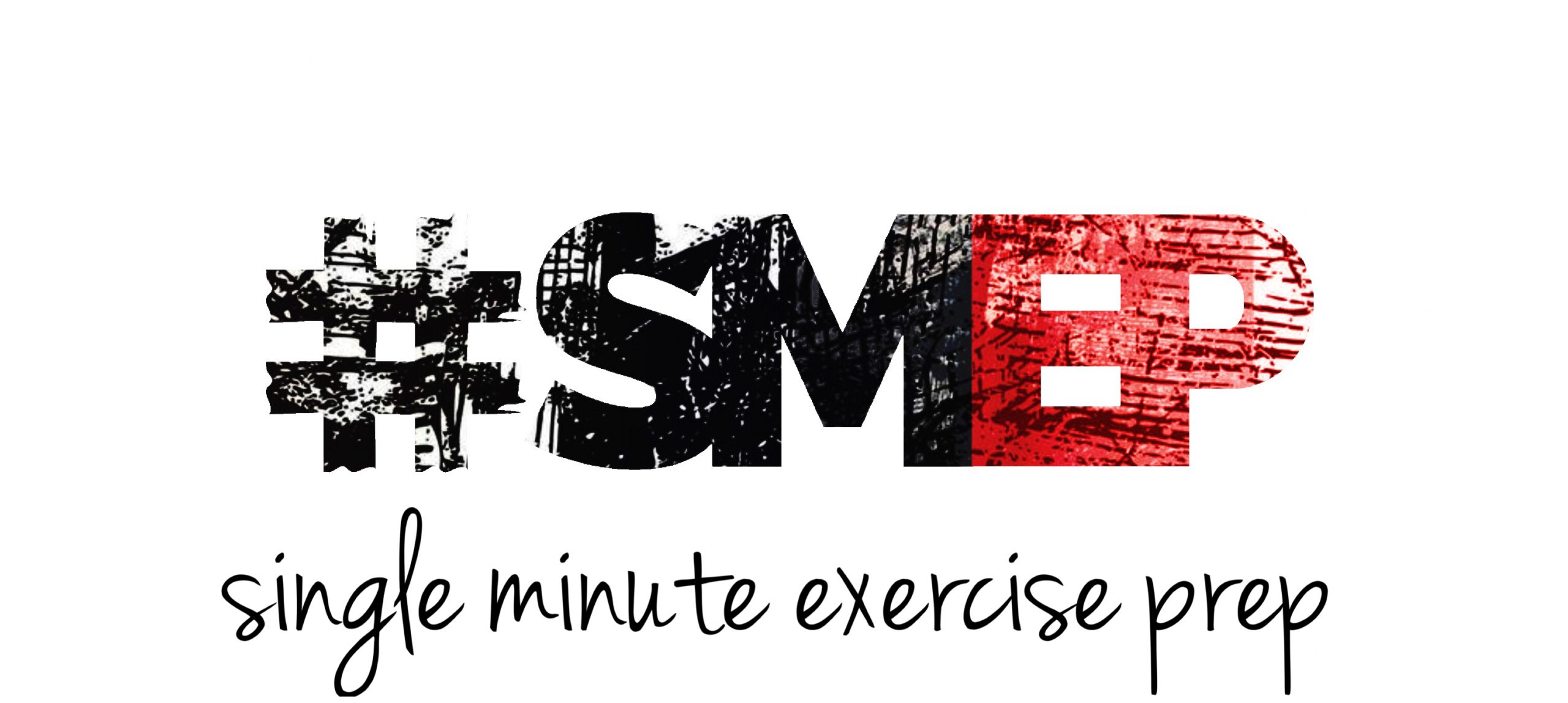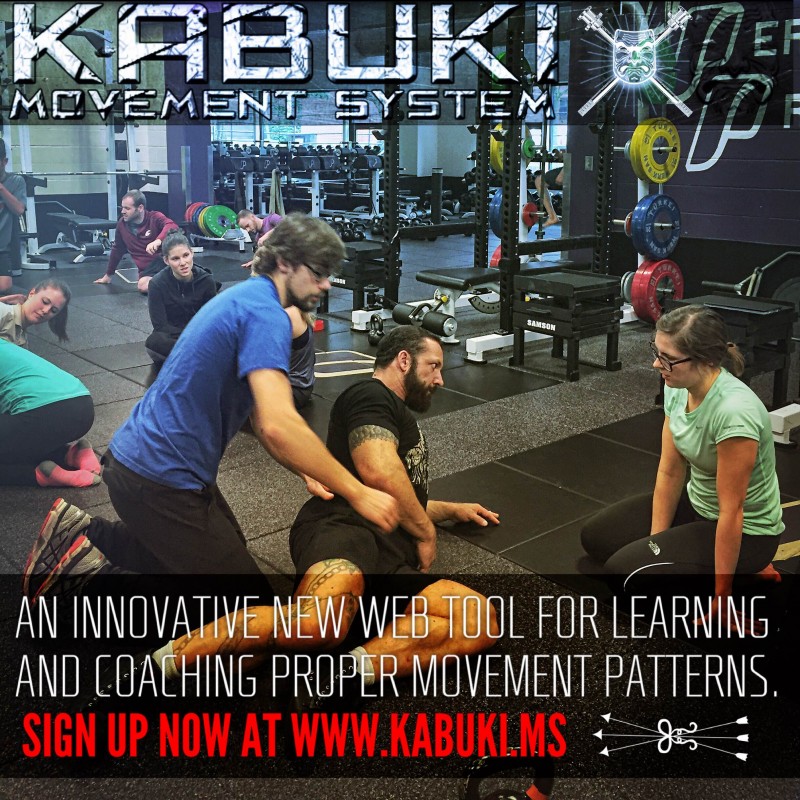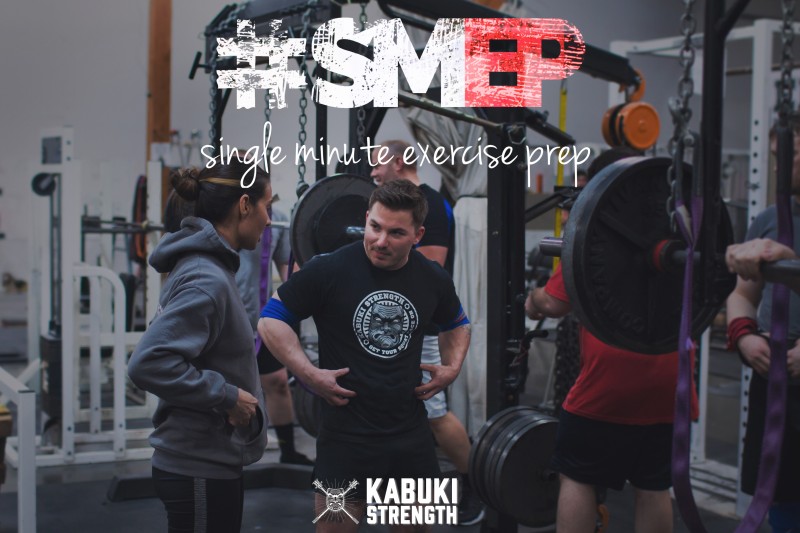
As the founder of a popular movement website called www.Kabuki.MS I feel it’s my duty to tell you that I want you to limit the amount of exercise prep that you perform. Yes, I said limit your exercise prep, not do more. In recent years I’ve seen a trend for mobility, movement priming, and other means of exercise preparation. While this trend is very positive over the just ‘grind through the pain’ mentality of the past, by many it has been taken too far. Just like anything else people seem to jump right to the “if a little bit is great, then more must be better” approach.
If you are doing 45min of prep work and 30min of training, then you're doing something wrong! In fact your preparation work should not exceed 10min. Keep it to 9min or less of preparation work prior to training! We call this the #SMEP approach or Single Minute Exercise Prep.
So why isn’t more better? Simply put, it just isn't adding value and is actually taking away from the time you could be spending training. Training provides a stress response and thus adaptation. In the lifting world we call this GAINS. Yes, DEM GAINS are what we are looking for, and the cumulative effect over time yields improvement in performance. Improved performance is the reason we are in the gym or on the athletic field to begin with. And if you are training well, the movements done in training will not have the negative effect on the body, or even be the actual “prep work” in your warm-up. This leads us to our first key point.
KEY POINT: Evaluate your training and movement- If you need to do tons of prep or recovery work in excess of 9min just to be able to train…. You might want to look at your training or your quality of movement.
Once you have identified and fixed the movement and technique used in your training you should see far fewer issues developing. In fact if you're moving well, your warm-ups become your prep work. Let's sit and think on that concept for a moment. We seem to have lost what a warm-up is in some ways. A large gap that I’ve seen in both warm-ups and with prep work is in regards to both intentionality of the movement and doing it with purpose. A lot of fluff could be cut out if people applied Intent and Purpose to a few good movements. Or applied that to their warm-ups.
Don’t just go through the motions! You are doing this work for a reason. Practice perfection and really get after doing things correctly and cuing the patterns you are working on. Apply intent and purpose with a passion to a few key things and you will be far better off. In fact a lot of injures I’ve seen in my time as a coach have been propagated from people doing sloppy warm-ups and not focusing on cueing properly because the weight was light.
KEY POINT: Apply intentionality and purpose - There is a reason you are doing the work you are doing so don’t just go through the motions, focus on the key attributes and not just those heavy work sets. Do the same with your warm-ups.
Scope creep is the bane of many peoples training programs just as it is in their movement prep or rehab work. You read an article, see a video, or lets say absorb some new awesome content on kabuki.ms or mwod.com. Not everything can be additive. It may be awesome and it may something you should incorporate, but if you do then often something must be replaced.
You may have 50 things wrong that need corrected. Don’t focus on fixing the 50 things! Pick the top priorities and address those. Once those are no longer priorities move to the next. Trying to focus on 50 at once simply doesn’t work and you will not move forward. I would rather make progress on 3 issues than work on 50 and make no progress on any.
KEY POINT: Prioritize what’s important - Limiting what you are going to actually address is a powerful tool and makes you focus, which in turn will drive results in your key areas.
Like I said you may see awesome content produced by us or others, but is it right for you and is it a priority? Here is what Kelly Starrett and Chris Duffin have to say about this.
"Just Stop!"
On Kabuki.MS our parameters for implementing our system are as follows.
Training prep
- 9min or less
- 2-3 movements max
Off Day
- 18min or less
- 3-4 movements max
What is listed above is the maximal amount of work allowed! We often assign far less than this in practice and work on reducing both. The off-day work shown above is FAR above what we typically employ.
The last key point is a bit technical in nature. Not technical to understand, but technical in implementation. If we want to be prioritized and focused in our efforts then we must actually know and understand what the issue is. A proper assessment is necessary for you to understand what the underlying issues are so you can develop an appropriate plan. This does not always mean you need to seek an outside resource.
KEY POINT: Proper assessment is needed – You must be able to use some self-assessment strategies or seek a qualified professional if your are unable to, before developing an effective plan.
I know we have loaded a lot of videos on Kabuki.MS on assessment strategies. And many of the people I work with do the same thing such as MWOD, Acumobility, and FixYourOwnBack. But if you keep beating your head against a wall trying to figure out what is going on then you might want to seek some outside help. You can check our website for KMS certified folks. Another great resources is www.Rehab2Performance.com which will have a good list of clinicians and trainers. I also recommend people certified in DNS, FMS, SFMA, and PRI if you have any of those in your area.
First you need to fix faulty movement patterns or poor programming that are continually pushing you into injury. From there you need to actually figure out what your deficiencies are before you begin developing a plan. In developing the plan you must decide what is important and apply limits to the amount of preparatory work that is done. Then execute that plan with intent and purposefulness.
KEY POINT: Evaluate your training and movement
KEY POINT: Proper assessment is needed
KEY POINT: Prioritize what’s important
KEY POINT: Apply intent fullness and purpose











